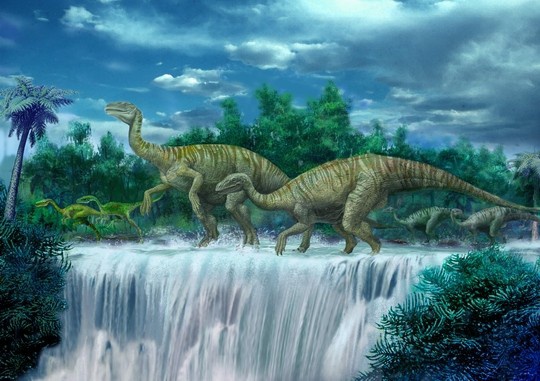Delighting dino-enthusiasts everywhere, this latest prehistoric find is a gem of a discovery that will contribute much more to fossil studies.
Paleontologists based in China have unearthed the skeletal remains of a Jurassic period dinosaur that is dated to have lived around 180 million years ago. The fossilised remains were about 70 percent intact, and was uncovered in an area with heavy soil erosion.
Close to the end of May, as soon as the remains were discovered, officials from the Dinosaur Fossil Conservation and Research Center set to work to carefully excavate the skeletal structure to prevent any further damage to the precious find.

Director of the Dinosaur Fossil Conservation and Research Center Wang Tao said that finding a skeleton specimen as intact as this one was incredibly rare, and it should be considered a national treasure.
“Such a highly complete dinosaur fossil is a rare find around the world,” he said. “Based on the fossils that were discovered over the years, and based on its tail and thigh bones, we believe that this is a type of giant Lufengosaurus, which lived during the Early Jurassic period.”

Discovered in Lufeng, China, the dinosaur is now known as a Lufengosaurus — or Lufeng Lizard — was a sauropod, also referred to as a herbivorous quadrupedal dinosaur. These great lizards existed between 200 million to 174 million years ago, and was native to Asian regions such as Laos and China.
Photos taken from the excavation site show a group of paleontologists carefully lifting the earth away to reveal the prized buried treasure. It is estimated that the skeleton is about 8 meters or 26 feet in length. Paleontologists also revealed that the hunt for the dinosaur’s missing head is still ongoing.


Wang feels that it would be highly unlikely for the team to not locate the head, and are all working hard in finding the final piece of this new-found puzzle.
This discovery comes as the second significant archaeological dinosaur find in China in the past two years. In January 2020, scientists managed to uncover a fossil that resembled a mix between a bird and a dinosaur.
Considering the close links between modern-day birds and the prehistoric giant terrestrial lizards, the find was deemed one that could significantly help scientists understand the evolutionary relationships between the species.

Upon studying the specimen, the species was named Wulong bohaiensis, or the “dancing dragon,” and it was determined that the dinosaur’s body had been covered with feathers when it was alive, and had two tail plumes on its rear.
"ExpatGo welcomes and encourages comments, input, and divergent opinions. However, we kindly request that you use suitable language in your comments, and refrain from any sort of personal attack, hate speech, or disparaging rhetoric. Comments not in line with this are subject to removal from the site. "



















